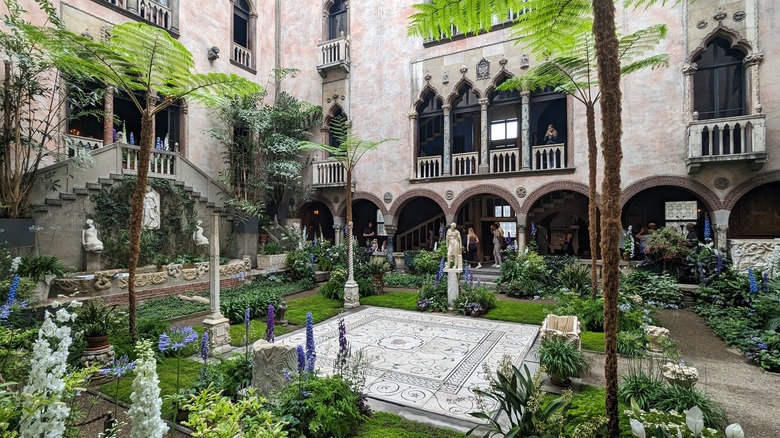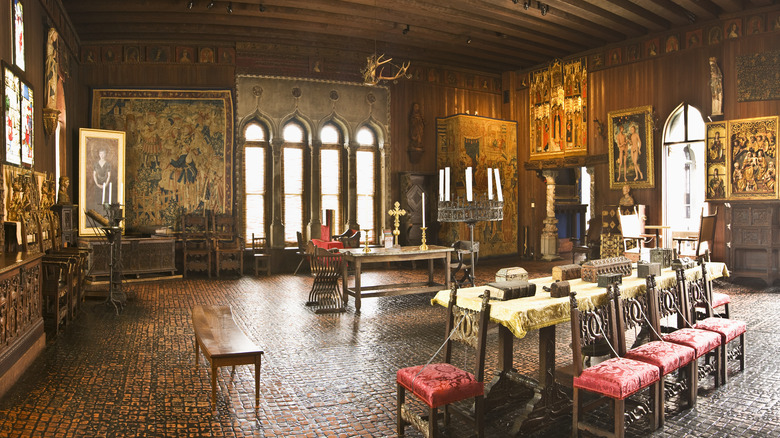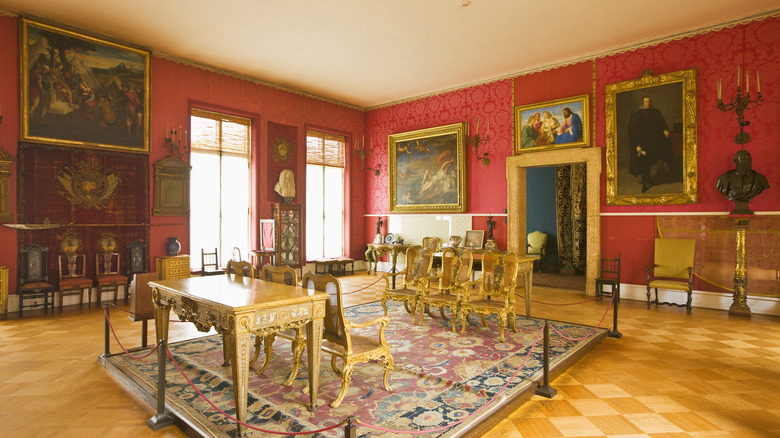The World-Class East Coast Art Museum Where One Of America's Most Famous Heists Took Place
In the early morning hours of March 18, 1990, the greatest art heist of all time took place at the Isabella Steward Gardner Museum in Boston, one of Rick Steves' favorite American cities and home to America's oldest public park. By the time the sun rose and began filtering through the skylights over the Venetian-style palazzo's central courtyard and into the surrounding galleries, the light fell on about a dozen empty frames. The masterworks that had sat inside them the day before had been removed by thieves dressed as police officers, who knocked on the door and said they were responding to a disturbance. The ruse worked, and the museum's two security guards quickly found themselves bound and gagged as the thieves got to work.
Over the next 81 minutes, they cut paintings by Rembrandt, Vermeer, Degas, Manet, and Flinck from the frames, grabbing a finial from Napoleon's Imperial Guard and an ancient Chinese vessel from the 12th century B.C. along the way. The total value of the 13 absconded artworks was $500 million, making it the largest art heist ever. It's passed into legend in the decades since, as no arrests were ever made. The whereabouts of the art remains a mystery — despite intensive investigations by the FBI and others, a $10 million reward, and conspiracy theories galore pointing fingers at the Vatican, Irish Republican Army, Middle Eastern emirs, Boston gangsters, and more. Countless books, podcasts, and documentaries have not got the art back, either.
One of the world's most beautiful museums
Fortunately, the missing artworks represent only a tiny portion of the dazzling array of paintings, drawings, sculptures, tapestries, books, and furniture exhibited at the Isabella Stewart Gardner Museum. Indeed, the museum itself — just a few train stops from this Paris-inspired Boston neighborhood with upscale shopping — is a work of art, although that's not entirely clear in the somewhat nondescript exterior. But step inside, and you might soon trip over your jaw after it drops to the ground. It starts in the literal centerpiece, the courtyard garden. Here, among ancient Roman mosaics and sculptures bathed in almost perpetual sunlight is nature's art — orchids, nasturtiums, chrysanthemums, bellflowers, hydrangeas, and other flowers — mingling with ferns, shrubs, and palm trees.
Wrapped around the courtyard are three gallery floors containing art treasures by the who's who of masters, including Sargent, Matisse, Titian, Whistler, Raphael, Rubens, Rembrandt, and Botticelli, among so many others. The stolen works are also given tribute, with their empty frames still hanging in place as a reminder of the loss and hope of recovery. Largely, the art is grouped in themed rooms — the Spanish Cloister, Chinese Loggia, Tapestry Room, Dutch Room, Gothic Room, and Chapel, among others — creating a fuller sense of immersion than more random placements. There is much more than paintings, as well, with stained glass windows, bronze busts, fabrics, ceramics, stone carvings, armor, and jewelry on display. So extensive is the collection that, much like the great art museums of the world, one visit barely scratches the canvas.
Isabella Stewart Gardner: A woman of power and a patron of the arts
Much of the charm and intimacy of the museum comes from the fact that it was Isabella Stewart Gardner's home. Born into privilege in 1840 and married 20 years later, Gardner devoted much of her time and wealth to art and travels with her husband, amassing her collection and forging friendships with artists and curators around the world. Her intelligence and zest for life won her much admiration among art circles, perhaps best shown in the museum's full-length portrait of her by John Singer Sargent. As art historian and Gardner's chief art advisor, Bernard Berenson, described her, "She lives at a rate and intensity, with a reality that makes other lives seem pale, thin and shadowy" (via Gardner Museum).
By the turn of the 20th century, Gardner's collection had become so large that a new home was required. Purchasing a tract of land in Boston's Back Bay Fens, she and her husband built a Venetian-style palazzo. A widow by the time of its completion, she moved in and spent the rest of her life installing and arranging the art. In fact, so clear was her vision that upon her death in 1924, she stipulated in her will that if the museum changed anything permanently, the collection would be automatically donated to Harvard University. Thankfully, even with the theft, the Isabella Stewart Gardner Museum still provides, in her own words, "for the education and enrichment of the public forever."


